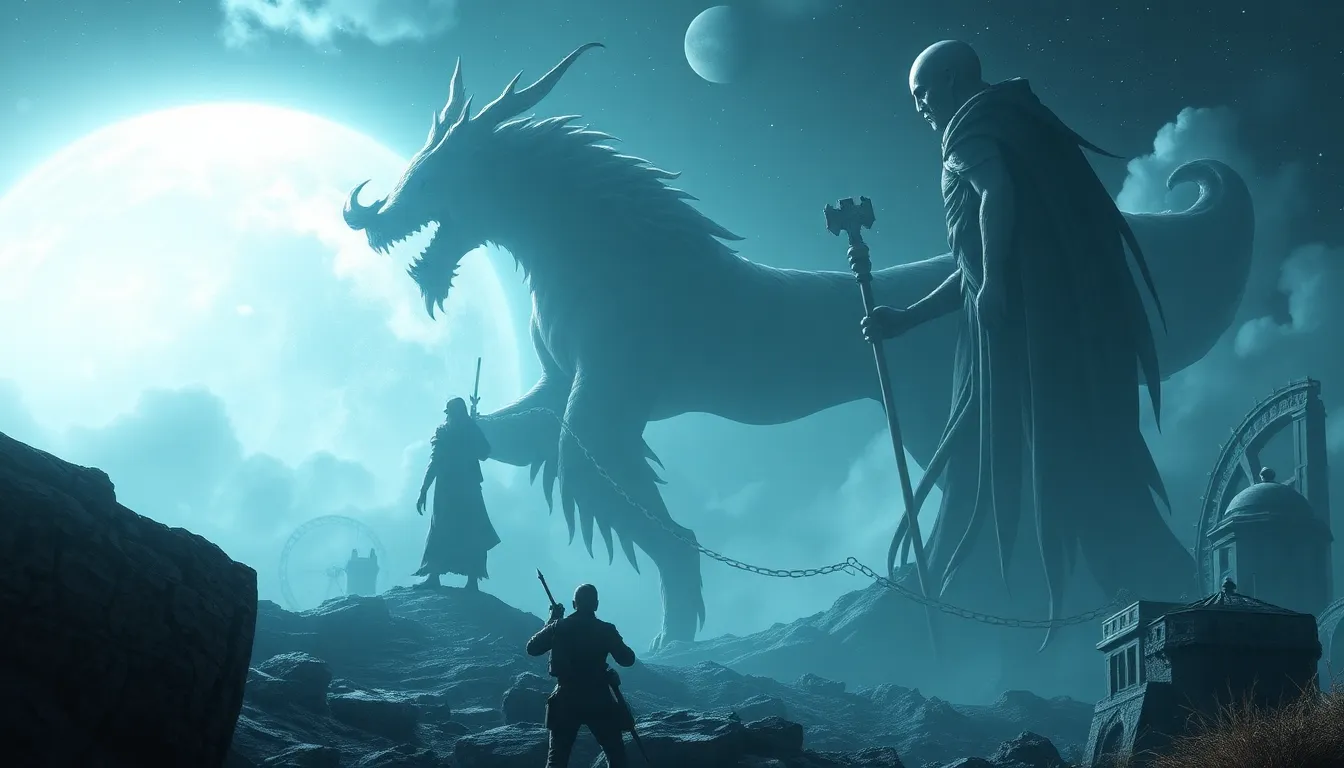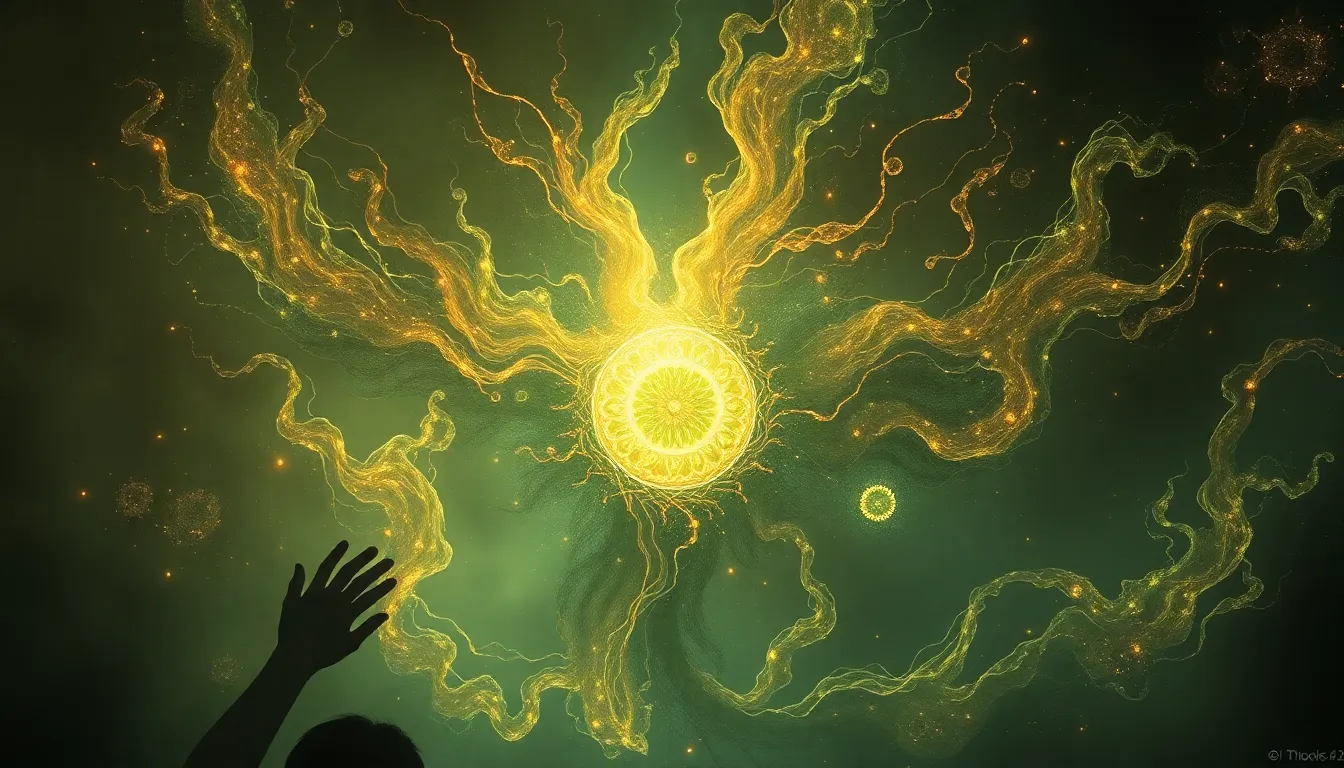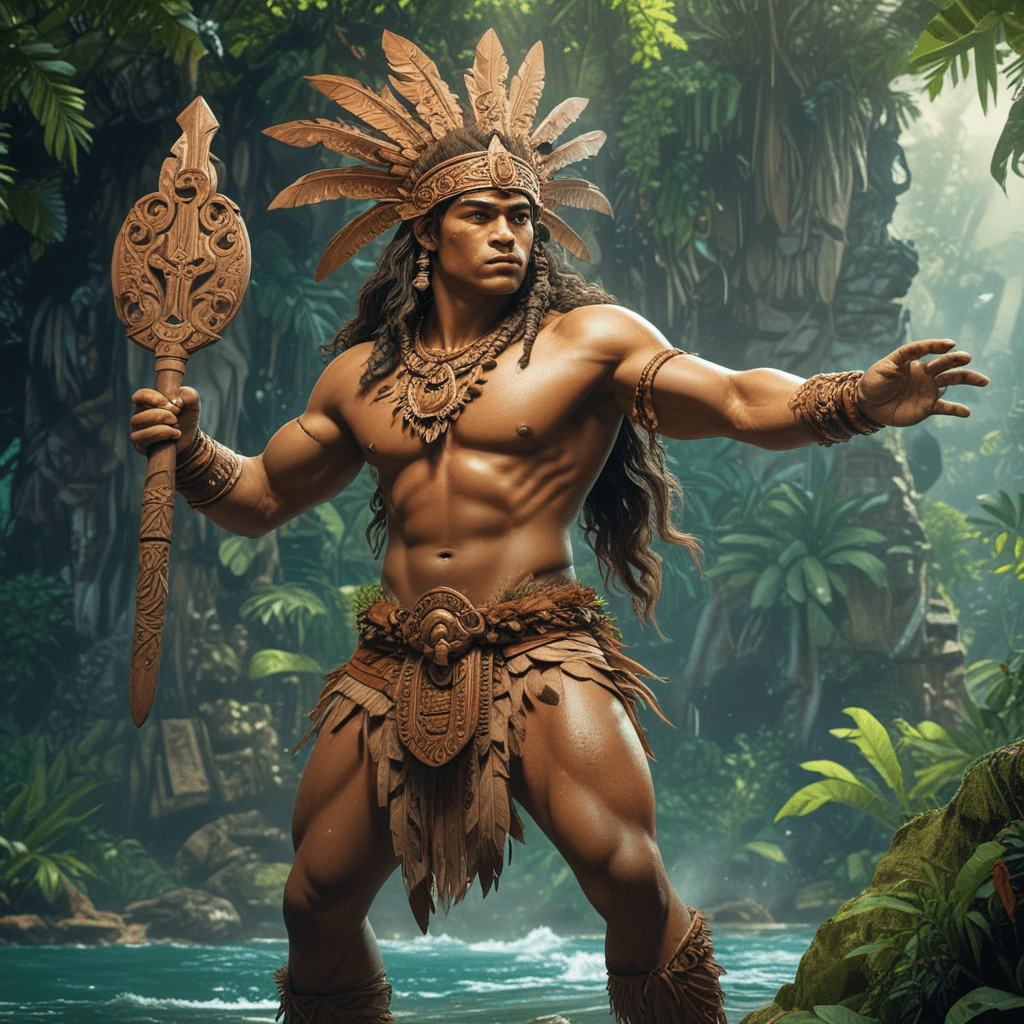The Myth of the Sky God: Kukulkan in Mayan Tradition
Introduction: Kukulkan in Mayan Lore
Kukulkan, the feathered serpent god, stands tall among the pantheon of Mayan deities, his legend echoing across Mesoamerican history. His name reverberates with power, inspiring awe and wonder in equal measure. In the Mayan worldview, Kukulkan embodies the very essence of the sky, wind, and life-sustaining rain, a celestial being whose presence permeates every aspect of human existence.
This exploration into the depths of Kukulkan's myth unveils the multifaceted nature of this enigmatic deity. From his serpentine origins and symbolic significance to the captivating creation stories that portray him as the architect of light and order, we delve deep into the heart of Mayan mythology.
The Serpent God: Origins and Symbolism of Kukulkan
The serpent, a creature of duality, slithers through Kukulkan's legend, symbolizing both the regenerative power of nature and the transformative potential within humanity. Often depicted with feathered appendages and a human head adorned with a magnificent headdress, Kukulkan embodies the fusion of earthly and celestial realms.
Mayan iconography portrays Kukulkan in various forms, each imbued with profound meaning. The feathered serpent motif adorns temples and monuments, signifying his role as a celestial benefactor. His association with the wind finds expression in representations that depict him with windswept feathers, carrying messages between gods and humans.
Kukulkan's Creation Story: Bringing Light and Order to the World
In the swirling mists of primordial creation, Kukulkan emerges as a luminous figure, dispelling the darkness and ushering in an era of light and order. Mayan myths narrate how he ascended to the heavens, becoming the embodiment of the morning star, Venus, and the bringer of dawn.
Through his celestial dance across the sky, Kukulkan illuminates the world, guiding humanity towards enlightenment and civilization. He is credited with bestowing upon humans the gift of knowledge, teaching them agriculture, astronomy, and the arts, forever transforming their lives.
Kukulkan as a Cultural Hero: Bringing Knowledge and Civilization
Kukulkan's legacy as a cultural hero echoes throughout Mayan history, woven into the fabric of their society and shaping their cultural identity. He represents the epitome of wisdom and enlightenment, a figure who guided them towards a prosperous and flourishing civilization.
Mayan cities, such as Chichén Itzá, stand as testaments to Kukulkan's influence, their architecture and symbolic motifs bearing witness to his enduring presence. His image adorns countless artifacts and sculptures, serving as constant reminders of his transformative impact.
The Feathered Serpent: Kukulkan's Connection to Quetzalcoatl
The feathered serpent motif transcends geographical boundaries, connecting Kukulkan to his Mesoamerican counterpart, Quetzalcoatl, the revered deity of the Aztecs. Both deities share similar attributes, embodying wisdom, creation, and the celestial realm, underscoring the interconnected nature of Mesoamerican belief systems.
This shared symbolism reflects the cultural exchange and diffusion of ideas that characterized the Mesoamerican world, where deities and their myths intertwined, creating a complex and captivating tapestry of religious beliefs.
Kukulkan in the Postclassic Period: Rise and Influence
The Postclassic period (900-1521 CE) witnessed a significant resurgence of Kukulkan's worship, particularly in the northern Maya region. Chichén Itzá, a sprawling metropolis, became the epicenter of his cult, with magnificent temples and pyramids dedicated to his honor.
The architectural marvels of Chichén Itzá, such as the iconic El Castillo pyramid, showcase the profound influence Kukulkan held over Mayan society. The pyramid's alignment with the equinoxes and solstices reflects the Mayans' sophisticated astronomical knowledge and their belief in the celestial power of Kukulkan.
The Legacy of Kukulkan: From Mythological Figure to Archaeological Icon
Kukulkan's legacy extends far beyond the realm of mythology, manifesting in the tangible world through archaeological wonders. The numerous sculptures, murals, and inscriptions bearing his image stand as enduring testaments to his veneration.
The archaeological record provides invaluable insights into the rituals and beliefs associated with Kukulkan. The discovery of cenotes, natural sinkholes revered as sacred portals to the underworld, underscores the multifaceted nature of his worship. These sacred spaces served as conduits for communication with the gods, including Kukulkan, embodying the Mayans' profound connection to the cosmos.
Theories on the Origins of Kukulkan: Exploring Different Perspectives
The origins of Kukulkan remain shrouded in a veil of mystery, prompting scholarly debate and diverse interpretations. Some theories suggest that he originated from the highlands of Guatemala, while others posit a connection to the Toltec culture of central Mexico.
These varying perspectives highlight the complex cultural exchange and diffusion that characterized Mesoamerica, where deities and their associated myths often transcended geographical boundaries. The integration of foreign influences into the Mayan pantheon underscores the adaptability and dynamism of their religious beliefs.
The Impact of Kukulkan on Mayan Society: Religion, Politics, and Culture
Kukulkan's impact on Mayan society extended far beyond the realm of religion, permeating the political and cultural spheres as well. His association with rulership and authority is evident in the numerous depictions of Mayan kings adorned with Kukulkan's attributes.
His image served to legitimize their rule, linking them to the divine and reinforcing their status as intermediaries between the gods and the people. Kukulkan's influence extended to the arts and sciences, inspiring exquisite works of art and fostering advancements in astronomy and mathematics.
Conclusion: Kukulkan, the Enduring Myth of the Sky God
Kukulkan, the feathered serpent god, continues to captivate and inspire, his legacy woven into the very fabric of Mayan history and identity. His myth encompasses themes of creation, knowledge, and celestial power, reflecting the profound reverence the Mayans held for the natural world and their belief in the interconnectedness of the cosmos.
From his serpentine origins to his enduring presence in archaeological wonders, Kukulkan's enduring myth serves as a testament to the rich tapestry of Mayan mythology and its enduring influence on human imagination.
Frequently Asked Questions (FAQs)
Who was Kukulkan?
Kukulkan was the feathered serpent god, a prominent deity in Mayan mythology associated with the sky, wind, and life-sustaining rain. He is often depicted with feathered appendages and a human head adorned with a magnificent headdress.
What is the significance of the feathered serpent motif?
The feathered serpent represents the duality of the serpent, symbolizing both the regenerative power of nature and the transformative potential within humanity. It also signifies the fusion of earthly and celestial realms.
What is the story of Kukulkan's creation?
Mayan myths narrate how Kukulkan ascended to the heavens, becoming the embodiment of the morning star, Venus, and the bringer of dawn. He is credited with bringing light and order to the world and bestowing knowledge upon humans.
How did Kukulkan impact Mayan society?
Kukulkan's impact extended beyond religion, influencing politics, culture, arts, and sciences. His association with rulership legitimized Mayan kings, and his image served as a source of inspiration for artistic expression and scientific advancements.
What is the legacy of Kukulkan?
Kukulkan's legacy lives on through archaeological wonders, myths, and legends, serving as a testament to the rich tapestry of Mayan mythology and its enduring influence on human imagination.



